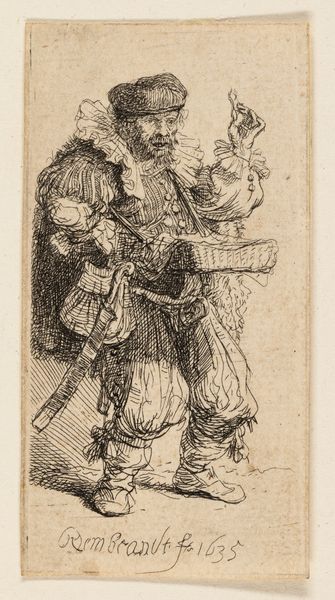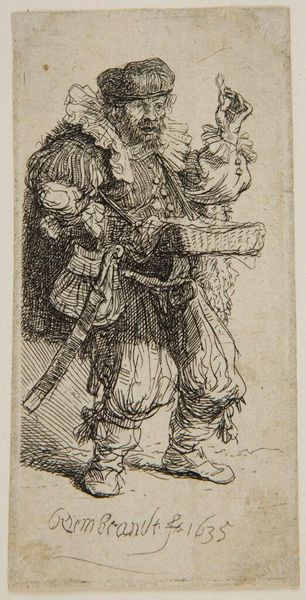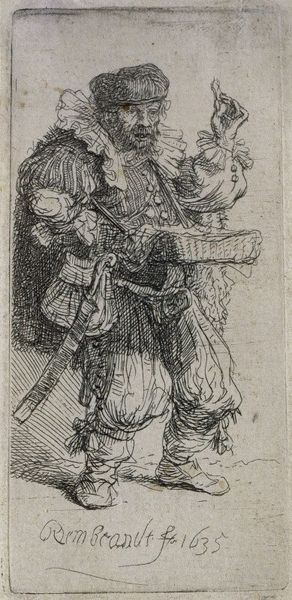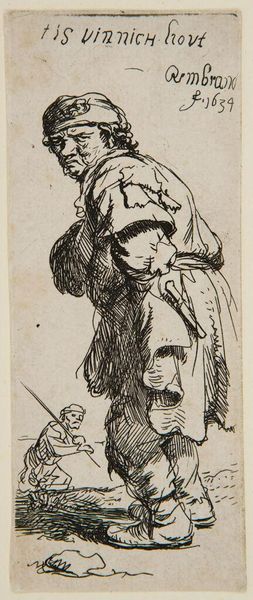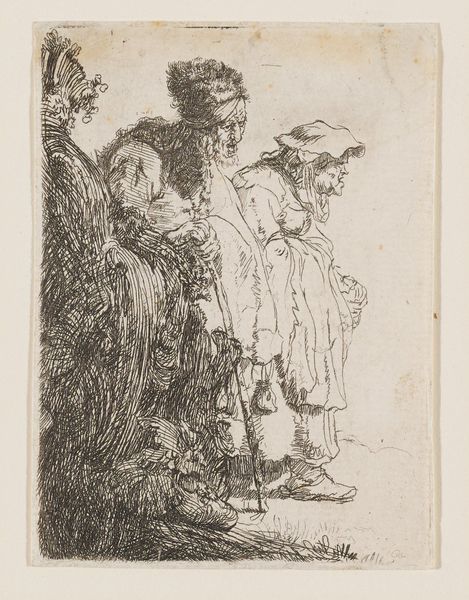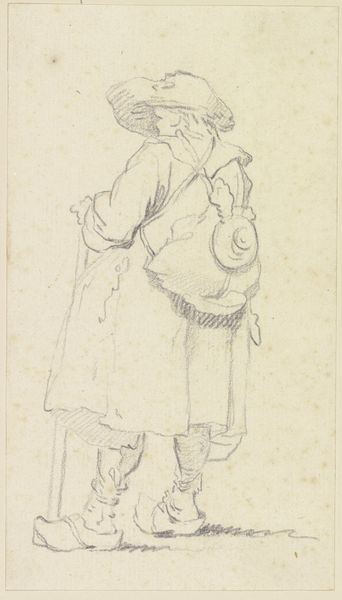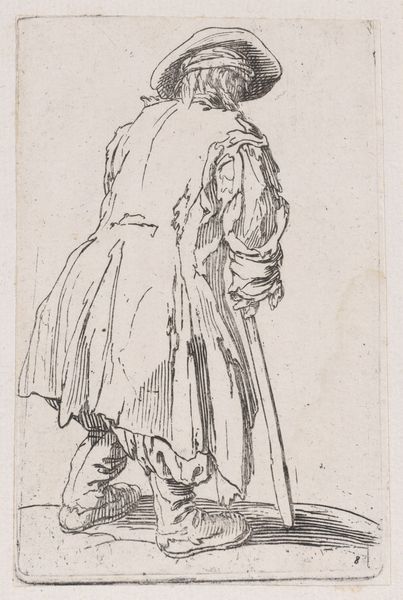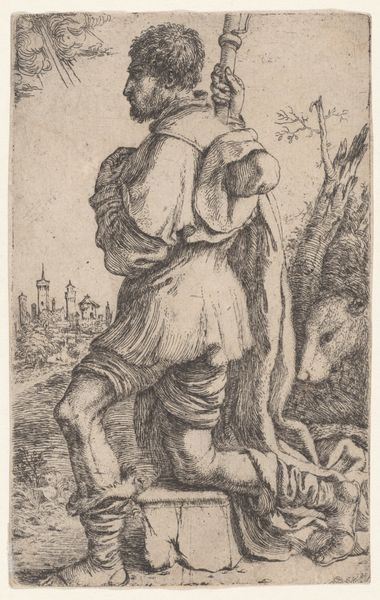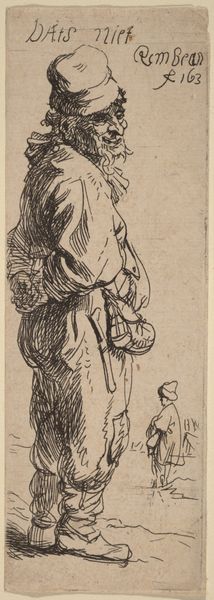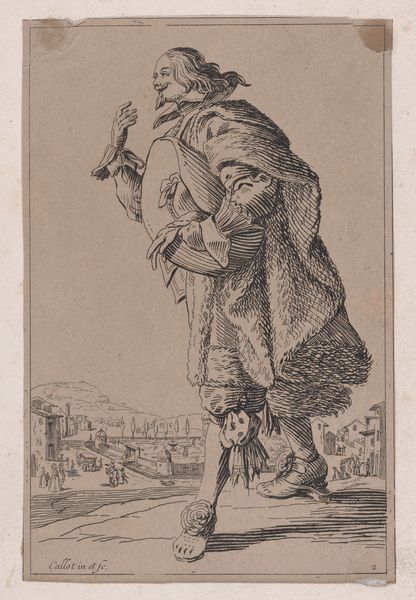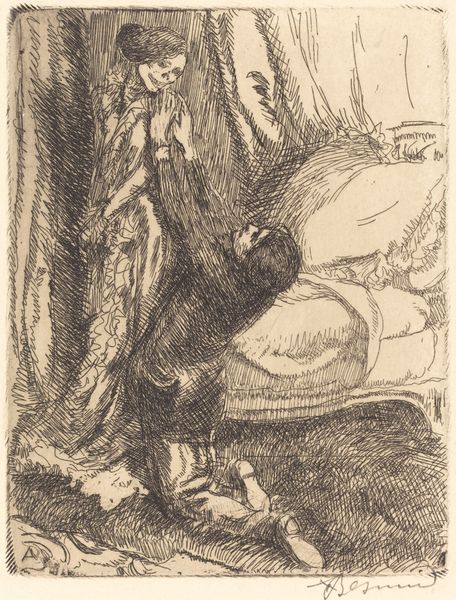
print, etching
#
portrait
#
baroque
#
dutch-golden-age
# print
#
etching
#
genre-painting
Copyright: National Gallery of Art: CC0 1.0
Rembrandt van Rijn made this print, "The Quacksalver," in 1635, using etching. This process involves drawing with a fine needle into a wax ground on a metal plate, which is then submerged in acid. The acid bites into the metal where the wax has been removed, creating recessed lines that hold ink. Rembrandt’s genius with this relatively simple technique is clear. The figure emerges from a welter of tightly hatched lines, which vary in depth and thickness to create areas of shadow and light. It is worth noting that printmaking was a democratic medium during this period, enabling an artist to reach a far wider audience than painting alone. The Quacksalver himself, a figure of dubious medical authority, becomes a metaphor for this situation. He promises much, but can he deliver? Similarly, a print can only ever be a representation of reality, yet it has the potential to circulate widely, reaching people from all walks of life. In this way, Rembrandt acknowledges the social implications of his own chosen medium.
Comments
rijksmuseum about 2 years ago
⋮
Initially, Rembrandt was fascinated above all by pathetic wretches compelled to beg for alms. Later, he also developed an interest in other colourful city folk, which he usually depicted in the same minuscule format. In these six etchings, he portrayed a quack in outmoded clothing, two Polish soldiers, two street musicians (an organ grinder and a fiddler) and a skater.
Join the conversation
Join millions of artists and users on Artera today and experience the ultimate creative platform.
